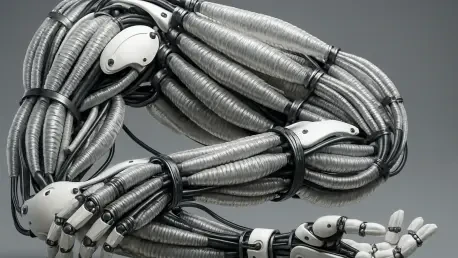In a world increasingly reliant on automation and intelligent systems, the fusion of engineering with biology brings remarkable advancements to life. Artificial muscle technology, once the stuff of science fiction, has emerged as a critical innovation poised to revolutionize robotics and beyond. This cutting-edge technology promises to transform mechanical systems by infusing them with the adaptability and resilience found in nature, setting the stage for robots that move and interact with the world in unprecedented ways.
Understanding Artificial Muscle Technology
Artificial muscle technology centers around replicating the functional attributes of natural muscles, using components that can flex and contract like their biological counterparts. At its core, this technology utilizes soft actuators—devices designed to enable movement in machines, mimicking the natural elasticity and response of muscles. These actuators are pivotal in allowing robots to perform tasks requiring precision and adaptability, such as delicate handling and maneuvering through challenging terrains. The reliance on materials that seamlessly blend strength and flexibility is crucial in making these artificial muscles operate effectively.
Material innovations play a fundamental role in advancing artificial muscle capabilities. Researchers have made significant strides in developing materials that are robust yet flexible, utilizing everything from advanced polymers to affordable rubbers commonly seen in consumer goods. These material choices not only enhance performance but also ensure the economic feasibility of deploying artificial muscles on a larger scale. Furthermore, bio-inspired design elements mimic the structural nuances of human musculoskeletal systems, enabling machines to achieve truly lifelike movement, integrating easily with complex environments.
Recent Trends and Developments
The landscape of artificial muscle technology is defined by rapid advancements and shifting industry trends, ushering in a new era of robotic engineering. Innovations such as 3D printing have remarkably influenced how artificial muscles are fabricated, offering precise and customizable solutions that streamline production processes. Emerging trends spotlight a movement toward incorporating human-like sensory functions in robots, allowing them to perceive and react to their surroundings with increased sophistication.
This shift reflects an industry-wide push beyond traditional rigid systems, aiming to craft robotics that mirror the flexibility and responsiveness of living organisms. Battery-operated systems have gained traction, addressing historical challenges associated with power demands while ensuring artificial muscles maintain their strength. This power efficiency allows these systems to push the boundaries of functionality without cumbersome infrastructure, encouraging broader adoption across various fields.
Real-World Applications
The implementation of artificial muscle technology spans numerous sectors, each leveraging its unique strengths. In the medical field, for instance, prosthetics equipped with artificial muscles offer enhanced mobility and a more natural experience for users. Manufacturing industries are also benefiting from robotics capable of handling delicate products with human-like dexterity, minimizing damage and increasing efficiency.
Beyond traditional industrial applications, artificial muscle systems find utility in consumer electronics, where tactile feedback and responsive touch have become increasingly important. The technology’s versatility extends to exploration and disaster response robots, which require the adaptability to navigate unpredictable environments successfully. Each application underscores the transformative potential of artificial muscles in reshaping how machines interact with the world.
Challenges and Limitations
Despite its promise, artificial muscle technology still grapples with several technical and market challenges. Technical limitations include the need for advanced control systems to precisely manage the complex movement of soft actuators. Moreover, regulatory hurdles, especially in sectors like healthcare, require rigorous testing and validation processes, potentially slowing widespread adoption.
Market constraints are equally significant, as cost remains a considerable barrier to entry. While material innovations aim to reduce expenses, the initial investment for deploying advanced robotic systems can be prohibitively high. These challenges necessitate continuous research and development efforts to refine the technology and navigate regulatory landscapes effectively, accommodating broader use.
Looking Ahead
The future of artificial muscle technology is optimistic, with expectations of breakthrough developments that will further enhance its capabilities. Continued advancements in materials science promise even more robust and versatile artificial muscles. The integration of artificial intelligence and machine learning into control systems could significantly improve the precision and efficiency of robotic movements.
As society continues to embrace automation’s benefits, the long-term impact of artificial muscle technology on industries and daily life is projected to be profound. Innovations in this field are likely to encourage more sophisticated humanoid robots, capable of undertaking complex tasks while seamlessly integrating into human environments. This potential opens exciting possibilities for future exploration and development.
Final Thoughts
Artificial muscle technology presents a pivotal opportunity for bridging biological and mechanical innovation. This technology meets the challenge of creating lifelike movement in robots, blending flexibility with mechanical strength. Researchers successfully overcome obstacles, harnessing material innovations and bio-inspired designs, paving the way for a versatile application spectrum.
In conclusion, artificial muscle technology stands as the transformative key to unlocking a new robotic age. It seamlessly merges engineering prowess with biological inspiration, setting in motion a future ripe with possibilities for improving efficiency, functionality, and adaptability across industries.









